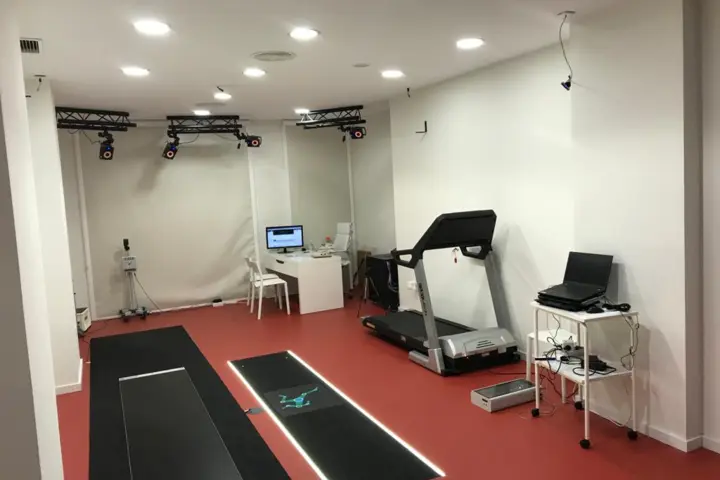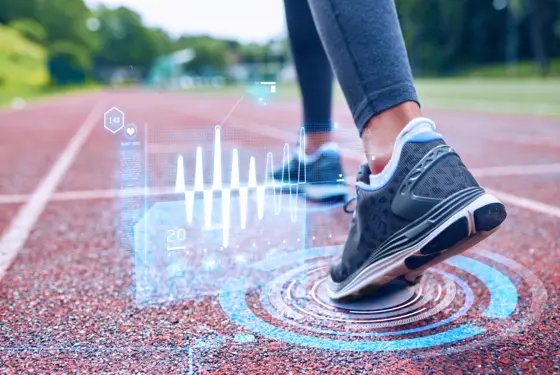Accurate data acquisition makes diagnostics easier
A 3D force plate from Kistler has proven particularly effective for analyses of complex movement sequences – especially those that go beyond disorders of the feet as such.
"We set high standards for our work, and we like to collect as much information as possible for a diagnosis. That’s why we opted for one of the systems from Kistler, which are regarded as the gold standard on the market."
José Manuel Bru Lázaro, expert in motion analysis and clinical biomechanics
The force plate can be used to perform numerous tests and evaluations in order to collect patients' kinetic and kinematic data. 'In most cases, we use the force plate together with an optical acquisition system – and that generates some useful synergies. With this combination, for instance, we can calculate the resultant moments as well as the strength and direction of the forces that the muscle groups must apply so as to balance out certain moments,' Bru Lázaro continues.
The piezoelectric technology incorporated into the force plates allows very precise acquisition of dynamic processes. In combination with high-performance visualization and data processing software, this technology also provides users with accurate knowledge of the measurands and parameters involved. Performance analysis during rehabilitation is just one example where the solution from Kistler measures moments and ground reaction forces as well as calculating overall performance. 'This data is very helpful for us – we can use it to determine key parameters such as efficiency, energy recovery and energy consumption while walking or running,' Bru Lázaro points out.
The results obtained from a 3D force plate are also very valuable in connection with orthotics. Usually made of silicone, orthotic inserts are used to relieve pressure, correct posture, and mobilize joints. However, podiatrists generally regard it as difficult to obtain objective scientific proof that orthoses are effective, as foot specialist and surgeon Bru Juanes explains: 'It's very challenging to get reliable results about this, because no two feet are identical – and there are no identical stride patterns, either. But thanks to the system from Kistler, we can accurately measure and understand the changes that take place in each individual patient.'
Relieving pain and preventing operations
This case history shows what happens in practice: a patient came to the podiatry clinic in Valencia with problems affecting both his knees. In particular, he complained of such severe medial knee pain that he had already considered surgery. The preliminary examination revealed that he had multiple imbalances and tensions in various muscle groups. In addition, the patient had a very stiff hollow foot ('pes cavus') and his forefoot was turned inward ('metatarsus adductus'); he was also suffering from stresses in his shin (tibia) and instabilities in both knees.
'Our first goal was to locate the applied muscular forces. To do this, we used our Kistler force plate in combination with Motion Capture, as usual,' Bru Juanes recalls. 'Then we instrumented the patient with 22 markers to track down any kinetic and kinematic compensations.' With the help of the data they obtained, the specialists at Estudio de la Pisada could prepare orthoses to reduce the adduction forces in the knee – and thus lessen the pain. Following an analysis of movement patterns, the next step was to draw up a rehabilitation plan: based on physiotherapy, this helped the patient to experience less pain and improve his quality of life without resorting to an operation.
Summing up, Bru Juanes comments: 'Successes like these are only possible with the help of accurate and fit-for-purpose diagnostic instruments. The force measurement platform from Kistler proves its worth during regular use in our podiatry clinic – not only for treatments in the stricter sense, but also for analyses aimed at improving sports performance and preventing injuries. What's more, we can even use certain exercises for detailed evaluations of muscles – to determine fiber composition, elasticity and fatigue, myotatic reflex and other characteristics.'








